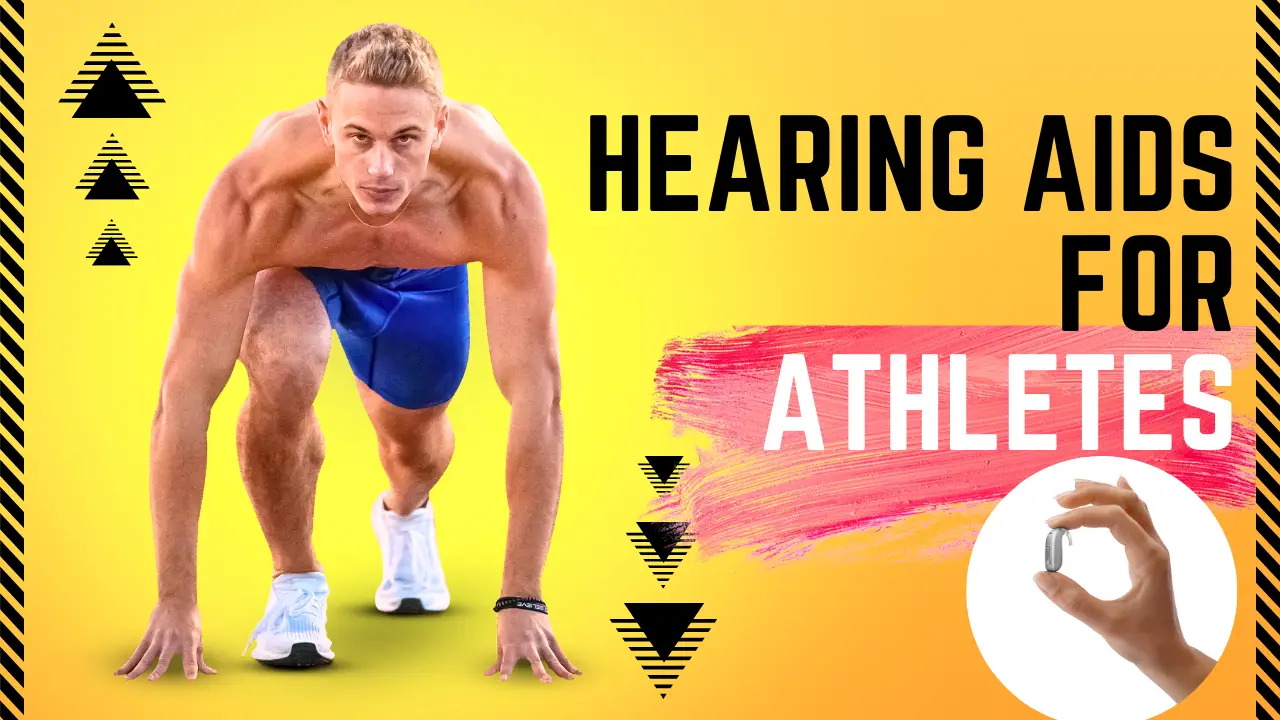Conquer workouts & games with crystal-clear sound! This guide unveils the best hearing aids for athletes, considering your sport, budget, & lifestyle. Discover features like sweatproof design, noise reduction, & directional mics to amplify what matters most. Get expert tips & brand recommendations to help you dominate without limits.
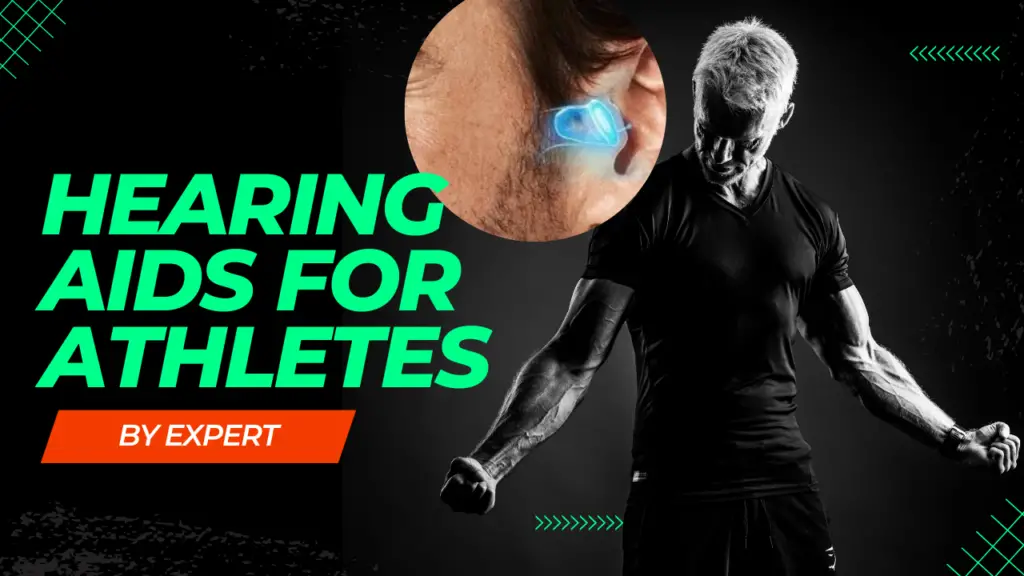
Introduction:
competing with hearing loss adds another layer of challenge to the athletic experience. While hearing aids can be a game-changer, simply amplifying sound isn’t enough. To thrive as an athlete with hearing loss, we need to consider a broader range of needs. Let’s delve deeper into what truly empowers athletes with hearing loss to excel:
1. Environmental Awareness:
- Noise Management: Imagine the roar of the crowd drowning out crucial instructions or teammates’ calls. Effective noise reduction strategies become paramount, filtering out unwanted din while amplifying essential sounds.
- Spatial Cues: Beyond just hearing, pinpointing sound sources is vital for situational awareness. This could involve understanding where the starting pistol fired, identifying approaching competitors, or navigating unfamiliar training environments.
2. Communication Clarity:
- Speech Understanding: Clear communication with coaches, teammates, and officials is crucial. Look for hearing aids with features like directional microphones that focus on speech and advanced algorithms that suppress background noise, ensuring every word is understood.
- Lipreading Support: While not replacing clear audio, lipreading skills can provide valuable visual cues, especially in noisy environments or when masks are worn.
3. Comfort and Confidence:
- Secure Fit: Loose hearing aids can be easily dislodged during intense activities. Secure ear hooks, clips, or custom-molded earpieces ensure they stay put, boosting confidence and focus.
- Minimizing the Occlusion Effect: Feeling plugged up can be uncomfortable and affect sound quality. Open-fit technology or vented earpieces can help mitigate this feeling while maintaining natural sound perception.
4. Personalization and Control:
- Customizable Programs: Different environments demand different settings. Personalized hearing aid programs for the gym, pool, or track ensure optimal sound clarity in each scenario.
- User-Friendly Controls: Easily adjusting volume, switching programs, or muting tinnitus should be simple and intuitive, even during vigorous activity.
5. Mental Fitness and Emotional Wellbeing:
-
- Auditory Training: Specific exercises can train your brain to interpret and process sounds better, improving speech understanding in challenging environments.
- Managing Frustration and Fatigue: Hearing loss can be tiring, mentally and emotionally. Learning coping mechanisms and building resilience are crucial for long-term success.
Key Features of Hearing Aids for Athletes
Durability Built for Champions:
Athletes demand tough gear that can withstand sweat, dust, and the rigors of training. Look for hearing aids with an IP (Ingress Protection) rating. Higher numbers indicate stronger resistance. IP67, for example, means the device is dustproof and submersible up to 1 meter, ideal for swimmers and water sports enthusiasts. Additionally, secure ear hooks or clips are crucial to prevent loss during intense movements.
Taming the Noise Beast:
Imagine a tennis match with every grunt and screech amplified – overwhelming, right? Enter directional microphones! They focus on important sounds like coaches’ instructions or teammates’ calls, filtering out background noise. Advanced noise reduction algorithms further suppress unwanted din, ensuring clear communication and situational awareness.
Wireless Freedom: Motivation on Demand:
Picture sprinting towards the finish line, fueled by your favorite pump-up playlist. Wireless connectivity makes it possible. Stream music directly to your hearing aids, keeping you motivated and focused. Bonus points for models with telecoil compatibility, enhancing sound clarity in loop systems like gyms or stadiums.
Recharged and Ready:
No more scrambling for batteries mid-marathon. Rechargeable hearing aids offer long-lasting power and convenience, perfect for athletes on the go. Some even come with built-in fitness trackers, syncing with your workout routine and providing valuable health insights.
Fit Like a Second Skin:
A loose hearing aid is a recipe for disaster. Consider custom-molded earpieces for a snug, comfortable fit that stays put during any activity. They also minimize the occlusion effect, that plugged-up feeling, ensuring natural sound quality.
Additional Tips:
- Ear hooks and sweat guards offer extra protection.
- Dehumidifiers prevent moisture buildup.
- Regular cleaning and drying extend lifespan.
The Contenders: Top Hearing Aids for Every Sport:
Choosing the right hearing aid is like selecting the perfect running shoe – individual needs matter. Here are some top contenders, each with unique strengths, catering to different athletic demands:
The Invisible MVP:
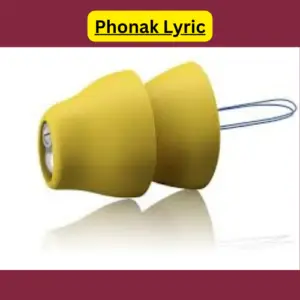
- Phonak Lyric: This completely-in-canal (CIC) hearing aid is worn 24/7 for months at a time, making it ideal for swimmers and those seeking constant hearing support. Its discreet design disappears deep within the ear canal, offering a worry-free experience. However, customization options are limited, and it might not be suitable for all ear shapes.
The Water Warrior:
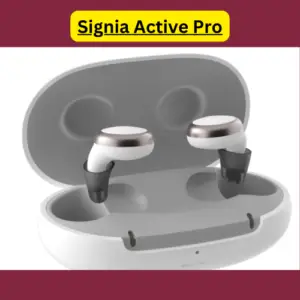
- Signia Active Pro: Boasting an impressive IP67 water resistance rating, this behind-the-ear (BTE) hearing aid is a true water sports companion. It withstands sweat, dust, and even submersion. Advanced directional microphones and noise reduction ensure clear communication even in noisy environments like pools or on the beach. Its larger size might require some getting used to for some athletes.
The Tech Titan:
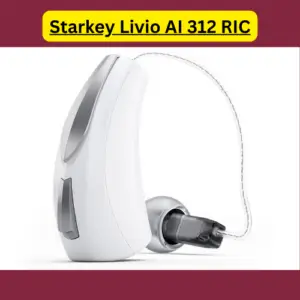
- Starkey Livio AI 312 RIC: This receiver-in-canal (RIC) hearing aid packs a punch with superior sound quality, customizable options, and a built-in fitness tracker. Its AI capabilities personalize settings to your environment and activity level, making it ideal for data-driven athletes. The rechargeable battery and wireless connectivity add to its convenience, but its smaller size may not offer the same power as larger models.
The Communication Champion:

- Widex Moment BTE: This BTE hearing aid features telecoil compatibility, enhancing sound clarity in loop systems like gyms or stadiums. Its wind noise reduction technology ensures clear communication even during outdoor activities. It also offers direct music streaming for added motivation. While comfortable, its larger size might be less discreet than some other options.
The Natural Sound Maestro:
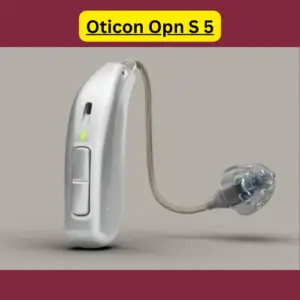
- Oticon Opn S 5: This CIC hearing aid utilizes open-fit technology for a more natural sound experience. It minimizes the occlusion effect, that plugged-up feeling, which is crucial for athletes who value natural sound perception. Additionally, it features directional microphones and tinnitus sound therapy, making it suitable for various sports and hearing loss needs. Its smaller size might not be as powerful as some BTE options.
Remember:
This is just a starting point. Consult a hearing healthcare professional for a personalized assessment and recommendations based on your specific sport, hearing loss profile, and individual preferences.
Bonus Tip:
Consider trial periods offered by some manufacturers to test and compare different hearing aids before making a final decision.
Beyond the Hardware: Essential Tips for Athlete-Athletes:
Gear Up:
Investing in the right accessories can optimize your hearing aid performance and ensure a smooth athletic experience:
- Ear hooks and sweat guards: These provide extra security and prevent sweat from damaging your hearing aids, especially during intense workouts.
- Dehumidifiers: Moisture buildup can be harmful to electronics. Invest in a dehumidifier specifically designed for hearing aids to keep them functioning optimally.
- Carrying case: Protect your hearing aids from bumps and scratches with a durable carrying case. Choose one with compartments for accessories and batteries.
- Remote control: Adjust volume, switch programs, and mute tinnitus discreetly with a remote control, especially during activities where reaching for your hearing aids might be difficult.
Communicate Clearly:
Open communication is key to success in any sport, and it’s even more important for athletes with hearing loss. Here are some tips:
- Inform coaches and teammates: Let them know about your hearing loss and any communication needs you may have. Explain how they can best communicate with you, whether it’s speaking clearly, facing you directly, or using written notes.
- Advocate for yourself: Don’t hesitate to speak up if you’re not understanding something or need something repeated. Remember, clear communication benefits everyone, not just you.
- Utilize assistive listening devices: Gyms, stadiums, and other venues often have assistive listening systems. Ask about their availability and don’t be afraid to use them.
Maintain Like a Pro:
Regular maintenance is essential to ensure your hearing aids perform at their best and last longer:
- Clean and dry your hearing aids regularly: Follow the manufacturer’s instructions for cleaning and drying your hearing aids. This typically involves wiping them down with a soft, dry cloth and letting them air dry completely.
- Replace batteries promptly: Don’t wait for your batteries to die completely before replacing them. This can help prevent damage to your hearing aids.
- Schedule regular checkups: Visit your hearing healthcare professional for regular checkups and adjustments. They can also clean your hearing aids professionally and ensure they are functioning properly.
Unlocking the Full Potential of Your Hearing Aids:
Choosing the right hearing aid and employing effective strategies are crucial, but the journey doesn’t end there. To truly unlock the full potential of your hearing aids as an athlete, delve into these advanced techniques:
Embrace Assistive Technology:
Go beyond the basic functionalities of your hearing aids and explore the world of assistive technology:
- Remote controls: Discreetly manage volume, switch programs, or mute tinnitus sounds during intense activities, giving you seamless control without interrupting your focus.
- Smartphone apps: Many hearing aids come with companion apps that allow for fine-tuning settings, monitoring battery life, and even streaming phone calls directly to your aids. Imagine receiving coaching instructions or coordinating with teammates mid-game, all through your hearing aids!
- Captioning apps: Live captioning apps transcribe speech in real-time, providing valuable visual reinforcement during lectures, meetings, or team briefings. This can be especially helpful in noisy environments or when understanding speech proves challenging.
Become Your Own Audio Engineer:
Transform your hearing experience by taking control of your hearing aids:
- Personalized programs: Work with your audiologist to create custom hearing aid programs for different environments – the gym, the pool, the track – ensuring optimal sound clarity in each scenario. Imagine switching seamlessly from amplifying coaches’ instructions to focusing on the starting pistol’s sound, all with a tap on your phone.
- Directional microphone control: Learn to manually adjust the directionality of your microphones, focusing on essential sounds like a coach’s voice or the starting beep, even amidst the roar of the crowd. This empowers you to actively filter out unwanted noise and prioritize crucial audio cues.
- Noise reduction levels: Experiment with different noise reduction levels to find the sweet spot that balances background noise suppression with important environmental cues. This allows you to personalize your auditory experience and optimize it for your specific sport and needs.
Train Your Brain:
Remember, your brain plays a crucial role in interpreting sound. Invest in auditory training:
- Specific exercises: Engage in targeted exercises designed to help your brain better interpret and process sounds, especially in challenging environments. This can improve your ability to understand speech in noisy gyms, decipher teammates’ calls on the field, or navigate unfamiliar training spaces with confidence.
- Lipreading skills: While not replacing clear audio, basic lipreading skills can provide valuable visual cues, especially in noisy environments or when masks are worn. Learning to lipread can enhance your overall communication and situational awareness.
Building a Support System:
Beyond the technology and techniques, building a strong support system is vital for athletes with hearing loss to thrive. Here’s how:
Connect with the Community:
- Online forums and groups: Joining online communities or support groups specifically for athletes with hearing loss can be a game-changer. Share experiences, swap tips, and find encouragement from others who understand your unique challenges. Platforms like the Hearing Loss Association of America (HLAA) or online forums dedicated to specific sports can be a great starting point.
- Mentorship programs: Seek guidance from experienced athletes with hearing loss who can offer valuable insights and mentorship. Their journey can inspire and equip you with the knowledge to navigate your own path.
- Local organizations: Connect with local organizations that support athletes with disabilities. They can provide resources, advocacy support, and even connect you with other athletes in your area for training or competition.
Advocate for Yourself:
- Educate your team: Inform coaches, teammates, and officials about your hearing loss and your specific needs. Explain how they can best communicate with you and what accommodations might be helpful. Remember, open communication fosters understanding and creates a more inclusive environment.
- Know your rights: Familiarize yourself with disability rights and legislation in your area, especially those pertaining to sports and education. This knowledge empowers you to advocate for yourself and ensure you have equal access to opportunities and resources.
- Speak up and ask for help: Don’t be afraid to voice your needs and ask for clarification or assistance if you’re struggling to understand something. Remember, effective communication benefits everyone, and assertive self-advocacy is key to your success.
Celebrate Your Victories:
- Recognize your achievements: Every step forward is a victory. Celebrate your personal triumphs, big or small, whether it’s mastering a new training technique, overcoming a communication hurdle, or simply completing a challenging workout. Celebrating your progress reinforces a positive mindset and fuels your motivation.
- Find inspiration in others: Surround yourself with positive influences and draw inspiration from stories of other athletes with hearing loss who have achieved their goals. Their journeys can serve as powerful reminders of what’s possible and motivate you to push your own boundaries.
- Share your story: Inspire others by sharing your own experiences and successes. This can raise awareness about hearing loss in sports, challenge stereotypes, and encourage others to pursue their dreams regardless of challenges.
Building a strong support system takes time and effort, but the rewards are immense. By connecting with the community, advocating for yourself, and celebrating your victories, you create a network of encouragement, resources, and understanding that empowers you to excel as an athlete and achieve your full potential. So, go out there, build your winning team, and conquer your goals!
Pushing the Boundaries: Exploring Emerging Technologies:
The future of hearing aids is brimming with exciting possibilities, promising to revolutionize the experience for athletes with hearing loss. Let’s explore some cutting-edge technologies on the horizon:
1. AI-powered Personalization:
Imagine hearing aids that learn and adapt to your unique needs in real time. AI algorithms can analyze your environment, activity level, and preferences, automatically adjusting settings for optimal sound clarity and noise reduction. This personalized approach could be a game-changer for athletes, ensuring they hear every crucial detail on the field, court, or track.
2. Direct Neural Stimulation:
While still in its early stages, direct neural stimulation bypasses the damaged inner ear and transmits sound signals directly to the auditory nerve. This technology holds immense potential for individuals with severe hearing loss, offering unprecedented access to a wider range of sounds and potentially improving spatial awareness – a critical factor for athletes.
3. Augmented Reality (AR) Integration:
Imagine overlays displaying real-time information, directions, or even sign language translations directly in your field of vision. AR integration in hearing aids could revolutionize how athletes with hearing loss interact with their environment, enhancing situational awareness and communication during training and competition.
4. Biometric Monitoring:
Hearing aids equipped with biometric sensors could monitor your heart rate, stress levels, and even muscle activity. This data, integrated with personalized training programs, could optimize performance, prevent injuries, and provide valuable insights into your overall well-being as an athlete.
5. Connectivity Beyond Limits:
Imagine seamlessly streaming coaching instructions, connecting with teammates wirelessly, or accessing real-time performance data – all through your hearing aids. Advancements in connectivity could break down communication barriers and provide athletes with hearing loss with a truly integrated experience within their training and competitive environments.
Remember: These are just glimpses into the future. While some technologies are still in the early stages of development, they offer a powerful vision of what’s possible for athletes with hearing loss. By embracing these advancements and utilizing available resources, athletes can push boundaries, redefine limitations, and achieve their full potential in the world of sports.
Conclusion:
For athletes with hearing loss, the journey to success goes beyond simply amplifying sound. It’s about empowering yourself with the right tools, strategies, and support system to thrive in a world designed for perfect hearing. This blog post has explored various aspects of this journey, from choosing the right hearing aid to unlocking its full potential, building a support network, and embracing emerging technologies.
Remember, you are not limited by your hearing loss. You are defined by your determination, resilience, and unwavering spirit. With the resources available and the advancements on the horizon, you have the power to redefine limitations and push the boundaries of what’s possible.
So, go out there, embrace the possibilities, and conquer your athletic dreams!
Read more on hearing aids:
Common Myths and Misconceptions About Hearing Aids
Unraveling how does a hearing aid work: A Comprehensive Exploration
Hearing Aid Financing: A Comprehensive Guide
FAQ’s
General:
-
Q: Do I need special hearing aids for sports?
A: Yes, standard hearing aids may not be sweatproof, durable, or have features like noise reduction crucial for athletes.
-
Q: What features are important in hearing aids for athletes?
A: Water/sweat resistance, noise reduction, directional mics, wireless connectivity, Bluetooth streaming, rechargeable batteries.
-
Q: How much do hearing aids for athletes cost?
A: Prices vary depending on features and technology. Expect $2000-$6000, but consult professionals for specific options.
-
Q: Where can I buy hearing aids for athletes?
A: Licensed audiologists or hearing aid dispensers can assess your needs and recommend suitable options.
Specific:
-
Q: What are the best hearing aids for swimming?
A: Look for fully waterproof models with bone-anchored options for conductive hearing loss.
-
Q: What hearing aids are best for high-impact sports?
A: Choose secure, sweatproof BTE aids with features like directional mics to focus on coach’s instructions.
-
Q: Are there hearing aids with Bluetooth for music streaming during workouts?
A: Yes, several models offer Bluetooth connectivity for streaming music or podcasts directly to your aids.
-
Q: Do any hearing aids have rechargeable batteries?
A: Yes, rechargeable batteries are becoming increasingly common and offer convenience and cost savings.
-
Q: What government programs help with hearing aid costs?
A: Options vary by location, but research programs for veterans, disabled individuals, or children.
Bonus:
- Q: Can hearing aids improve my athletic performance?
A: By enhancing situational awareness and communication, hearing aids can indirectly boost performance and safety.

